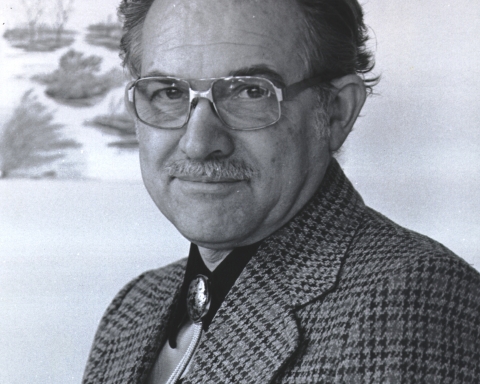The Shores of an old river
The Catskill Geologists
Robert and Johanna Titus
We have, in recent columns, been looking into our Catskills sandstones. Most of them were deposited in the channels of Devonian rivers. There is a pattern here: the various structures we have been looking at are arranged within the old river channels. Geologists have determined that these were meandering streams; they wandered back and forth across their old floodplains. Take a look at our first illustration.
Meandering streams have symmetrical channels; they have a deep side where the fastest flow is and they have a shallow side where the slowest flow is. That fast side is also erosive so the stream meanders in that direction. We have been, these past weeks, describing trough cross beds, planar cross beds and flat lying strata. These are typically arranged from the deep side to the shallow one. Again, see our first illustration.
Well our main point is that, if you look at our Catskills sandstones and recognize these structures, then you will find yourselves understanding our Catskill geology so much better. You can transport yourselves back through time and place yourselves in one of those streams. These, so long ago, were real environments, real habitats, just like those of modern rivers. Now you can experience those habitats. You can place yourselves into those channels.
Let’s finish our trip across these rivers. When we arrive at the shallow side of these streams, we are likely to see waves washing onto the old river’s shore. They are making a lap-lap sound. But, more importantly, they are doing what waves are very good at: they are sculpting the river sands into what geologists call ripples. Take a look at our second illustration. An experienced geologist looks at these and sees that they are symmetrical; that means that the slopes of each side are of similar steepness. That’s the mark of wave ripples. Current ripples are asymmetric, always steepest on the downstream sides.
As we wash ashore on the shallow side of our stream, we have completed the crossing of a 385-million-year-old river and have become so much more knowledgeable of Catskill geology. Reread our latest four columns and then take what you have learned on to your next hike into our mountains. It’s time for you to actually see those ancient streams/
Contact the authors at randjtitus@prodigy.net. Join their facebook page “The Catskill Geologist.”





